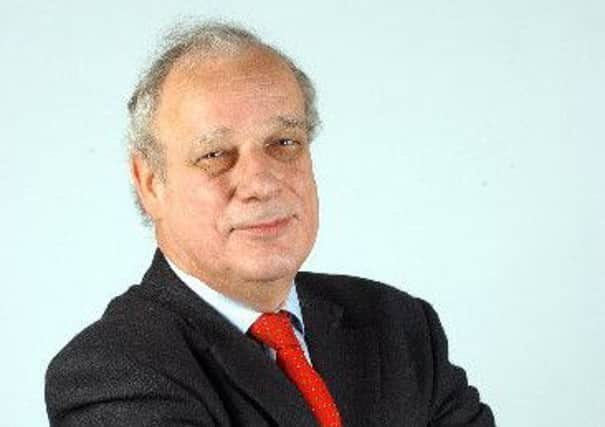Comment: Has Scotland really escaped the gloom?


Evidence is piling up of a strengthening recovery in recent weeks. It is still weak by historic standards but far better than almost all pundits were predicting just a few months ago.
The sharp improvement in business surveys cannot but prompt questions. Is it a false dawn as we experienced in early 2011? Can we trust it? Is it a trick of statistics?
Advertisement
Hide AdAdvertisement
Hide AdBut there is another even more striking feature that marks a decisive break from history and requires explanation: Scotland’s out-performance, evident from around the middle of last year. In previous recession-recovery cycles, Scotland’s economy typically lagged behind that of the UK by several quarters. And more often than not, our recovery pace was weaker.
Not so this time. Today the figures show Scotland doing better – from employment data to GDP performance. And any doubt on this is set to be dispelled by a blaster of an upbeat Bank of Scotland Purchasing Managers index survey tomorrow.
In recent months the Bank of Scotland/Markit surveys have consistently pointed to continuing, if modest, recovery. But the latest release is set to show a notably sharp acceleration in private sector activity in the past month. Indeed, we may be approaching the sharpest rise in business activity in Scotland since the boom period prior to the onset of the global banking crisis – and a faster growth of output than for the UK as a whole.
A separate survey release from a major business advisory and accountancy firm, also due tomorrow, is set to show business confidence at its highest point since May 2012.
So are we seeing a Scottish “Il Sorpasso” (when Italy’s growth surpassed Britain’s in 1987) and what might explain it? This has baffled economists for more than a year as our labour market statistics showed a consistently better performance than the UK overall. We are outperforming the UK on all three labour market indicators of employment, unemployment and inactivity rates. Headline employment stands at 72.2 per cent, compared with the UK’s 71.5 per cent, while our unemployment rate is 7.1 per cent, against 7.8 per cent for the UK.
To explain this “puzzle wrapped in an enigma” I turned to one of Scotland’s most respected economic gurus, Professor Brian Ashcroft of the Fraser of Allander Institute. Caveats, he warns, should apply to survey data, especially when seasonal factors are very strong – the PMI will not be seasonally adjusted. At this time of the year, “Scotland should do well”, he points out, “in tourism and related hotels, catering and retailing activities. Scotland is also enjoying something of a boom in inward investment which will boost activity.”
Outside of these sectors, the comparisons may reflect that Scotland’s labour productivity may have weakened less than in the rest of the UK “because the special nature of the great recession, destroying activity in investment banking for example, has hit the UK more.”
The recovery signs are, of course, good news, “but we must not get carried away. This recovery is still anaemic and far weaker than would be expected five years after a recession, even one generated by a banking crisis.” The prolonged stagnation and anaemic recovery reflects, in his view, a combination of the UK government’s fiscal consolidation, weak export performance reflecting supply-side structural problems, and weak global demand.
Advertisement
Hide AdAdvertisement
Hide AdFiscal consolidation “might be hitting Scotland somewhat less than the UK because, due to the Barnett Formula, the reduction in current departmental spend has been less in Scotland. Manufacturing export performance is a little stronger here – but overall weak. This may have been helped by inward investment.”
Yet another factor, he adds, may be that “household demand in Scotland is stronger due to the debt burden being lower in both personal and mortgage terms”.
Scotland, as Inverness-based Tony Mackay reminds me, is also being helped by the upsurge in North Sea oil development activity, with Chevron, for example, applying for approval of its Rosebank oil/gas discovery west of Shetland with an expected investment of £4.5 billion. Various Aberdeen-based companies have been announcing new orders, both for the North Sea and overseas and the Aberdeen area has been motoring as if the recession had never happened.
But there are also notable weak spots in Scotland. Housing completions last year slumped to fewer than 15,000, the lowest since 1947.
John McLaren of the Centre for Public Policy for Regions points out that the Markit surveys for May showed Wales and Yorkshire and Humberside scoring higher than Scotland, while similar index readings for Scotland in early 2011 were not followed by sustained recovery. We should be careful, he adds, of viewing this as a turning point with bank business lending still depressed and consumer spending power being squeezed by inflation.
And CBI Scotland’s response is notably cautious. “The real prize”, it says, “is to unlock the excess of cash on the balance sheets of large corporates, which indicates the significant potential for investment growth when confidence does return.” And the Scottish government “could pursue a bolder approach” in public sector savings, promoting competition in the delivery of public services to avoid further tax rises on business and free up money for infrastructure, skills development, and export support.
For the moment, expectations for the year as a whole and 2014 remain well subdued. Ernst & Young is forecasting Scottish GDP growth of just 0.8 per cent for this year and 1.4 per cent next. Fraser of Allander is forecasting 0.9 per cent growth this year and 1.6 per cent next. Optimism is strongest up in Inverness, where economist Tony Mackay is forecasting 1.5 per cent growth in 2013 and two per cent next. That’s as close to “escape velocity” from this prolonged stagnation as we could reasonably hope for. Whatever he’s on, its distribution needs to go Scotland-wide.
Twitter: @Bill_Jamieson